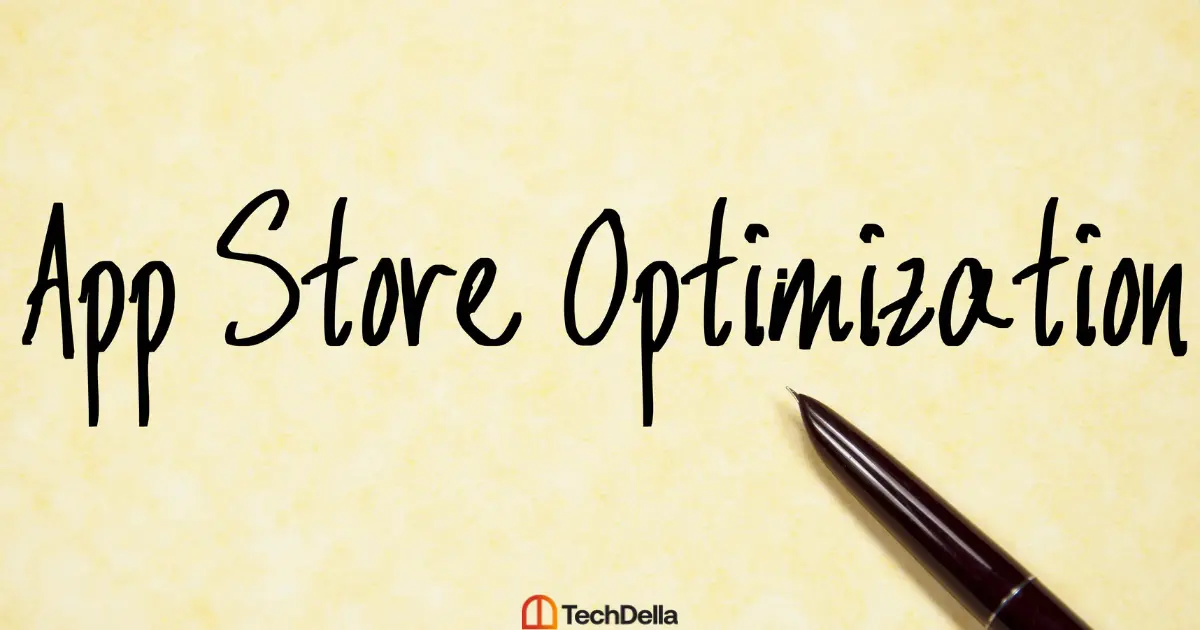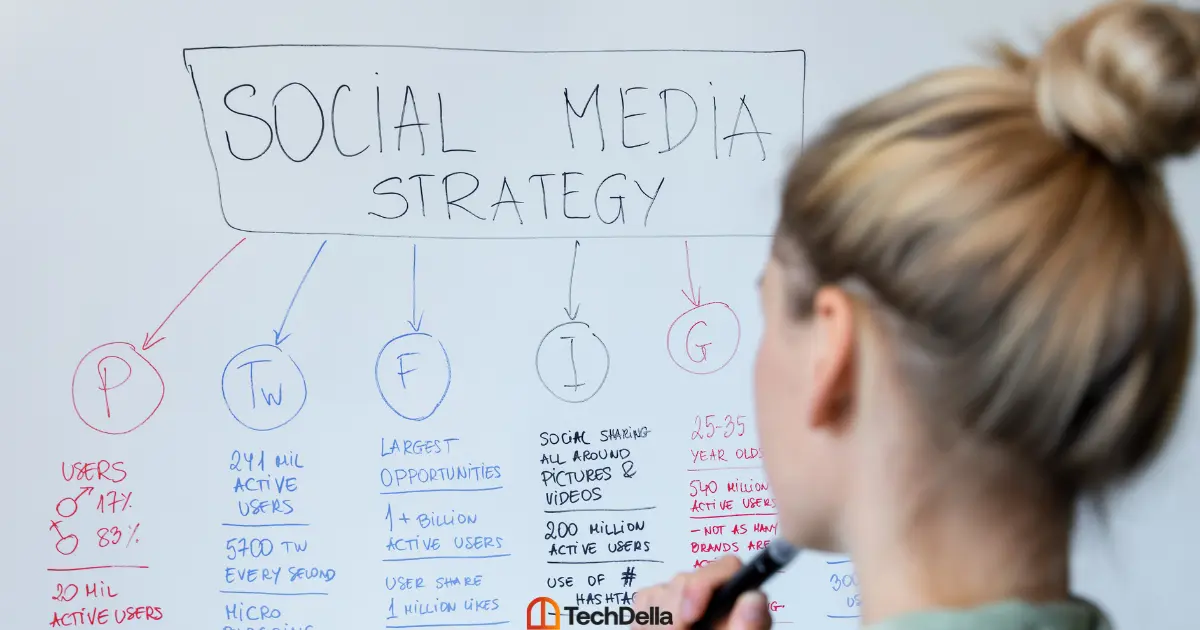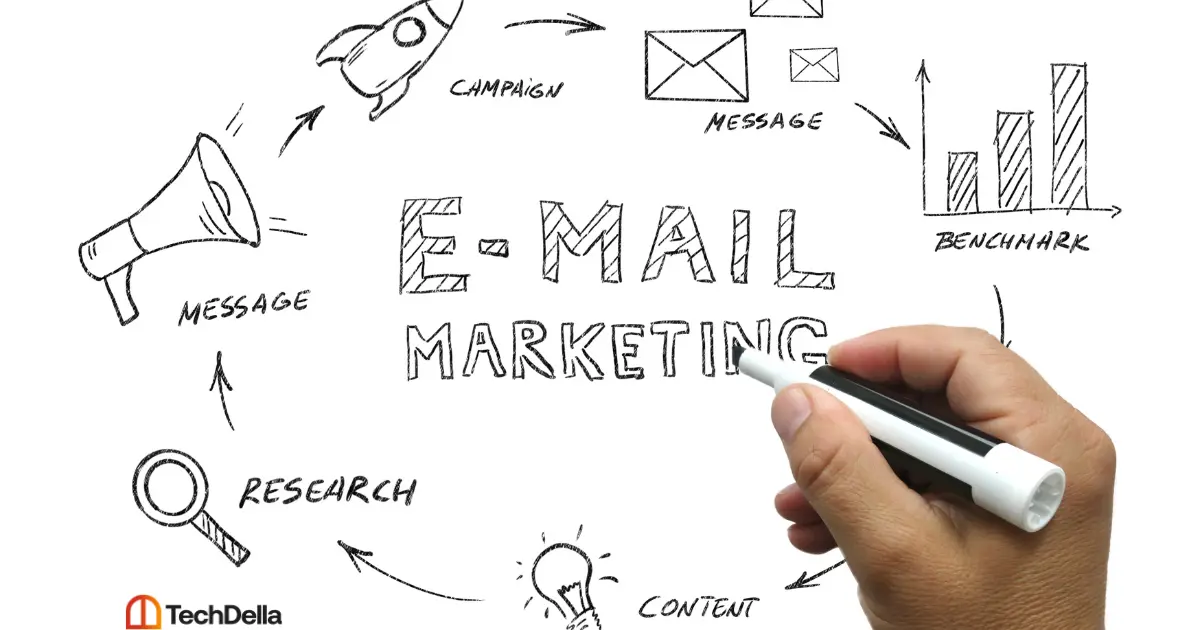
Did you know that starting a mobile app development business is one of the most profitable tech businesses in today’s digital landscape? According to statistics, the revenue for the mobile app industry is projected to reach about $614.40 billion by 2026.
This is a massive growth for the mobile app industry, and your business can be part of it, too. However, this can only happen if you know how to market a mobile app properly. Marketing your mobile app will help you reach your target audience and improve your chances of monetizing your app.
If you are unsure of how to market a mobile app, no need to worry; we are here to help. In this article, we will cover everything about how mobile app marketing works and the different ways in which you can market your mobile app.
What Is Mobile App Marketing?
Mobile app marketing encompasses all the strategies and activities used to promote a mobile application throughout its entire lifecycle—from pre-launch to post-launch and beyond. This type of marketing is done through app store optimization, social media advertising, content marketing, influencer partnerships, email campaigns, and paid promotions. The primary goal is to increase app downloads, improve visibility in app stores, boost user engagement, and ultimately drive retention and monetization.
Unlike traditional marketing, mobile app marketing requires a multi-channel approach that considers the unique behaviors of mobile users and the competitive app store environment. Now, let’s dive into the most effective strategies you can use to market your mobile app successfully.
How to Market a Mobile App Online in 2025
1. App Store Optimization (ASO)

App store optimization, known as ASO for short, is similar to search engine optimization, except that it is specifically designed for mobile app marketing. ASO involves increasing the visibility of a mobile app to help it rank higher in the search results of app stores like Google Play Store and Apple App Store.
Statistics show that about 70% of mobile users make use of search to find new apps, and 65% download the apps after a search. This demonstrates the critical importance of app store optimization in your mobile app marketing strategy.
However, this process is not easy as it involves constant optimization of your app listing to increase click rates and downloads. For effective app store optimization, you’ll need to encourage app ratings and reviews from users. This is crucial because app reviews significantly impact customer acquisition, with 79% of users constantly checking reviews made on apps before downloading.
A comprehensive ASO strategy depends on several key factors:
- Proper keyword choice: Research and select relevant keywords that your target audience uses when searching for apps like yours. Use tools like App Annie or Sensor Tower for keyword research.
- App icons and title: Create an eye-catching icon that stands out in search results and clearly represents your app’s purpose. Your title should include your primary keyword while remaining memorable.
- Optimizing for voice search: As voice search becomes more popular, optimize your app description for natural language queries.
- Screenshots and videos: Include high-quality screenshots and preview videos that showcase your mobile app’s features and benefits. These visual elements can increase conversion rates by up to 35%.
- Choosing the right app category: Select the most accurate category for your app to ensure it appears in relevant searches and reaches the right audience.
- Localization: Translate your app listing into multiple languages to reach international markets and increase your potential user base.
2. Social Media Marketing

Social media marketing is one of the most powerful methods for marketing a mobile app. Recent statistics show that the number of social media users around the world grew from 4.72 billion in 2023 to 5.04 billion in 2024. Following this statistic, using social media to market your mobile app is definitely a smart move.
As an app developer, you can use social media to create awareness for your app, build a community where users can give feedback, share user-generated content, and run targeted advertising campaigns. However, before using this strategy, you’ll need to identify the social media channels that your target audience interacts with most frequently. This could be TikTok, Instagram, Facebook, X, or WhatsApp.
Here are effective social media marketing tactics for your mobile app:
- Create teaser content: Build anticipation before launch with behind-the-scenes content, sneak peeks, and countdown posts.
- Share user testimonials: Showcase positive experiences from real users to build trust and credibility.
- Host contests and giveaways: Encourage downloads and engagement by offering prizes to users who download and share your app.
- Post tutorial videos: Create short, engaging videos that demonstrate how to use your app’s key features.
- Engage with your community: Respond to comments, answer questions, and actively participate in conversations about your app.
Whether it’s TikTok or Instagram, knowing how to market a mobile app through the right social platforms will put you ahead of competitors.
3. Influencer Marketing
Imagine this: You’re seated in your room, going through different content on Instagram. Ten minutes into your fun moment, your favorite influencer pops up advertising a product you never had an interest in. For some reason, you pause and pay attention just because it’s your “Fave.” Trust me, after watching the ad, you might actually want to check out the product because you trust the influencer.
The use of an influencer to grab your attention is known as influencer marketing. As an app developer, you can partner with influencers who resonate with your target audience to create authentic buzz and promote your app effectively.
When implementing influencer marketing for your mobile app, consider these best practices:
- Choose relevant influencers: Select influencers whose audience demographics match your target users. Micro-influencers (10K-100K followers) often have higher engagement rates than mega-influencers.
- Prioritize authenticity: Work with influencers who genuinely enjoy your app and can create authentic content about it, rather than scripted advertisements.
- Provide exclusive offers: Give influencers unique promo codes or special features to share with their followers, making their audience feel valued.
- Track performance: Use unique tracking links or promo codes to measure the ROI of each influencer partnership.
- Consider multiple influencer tiers: Combine macro, micro, and nano-influencers to reach different audience segments effectively.
Note: You must choose an influencer whose brand and audience align with yours to get the desired results.
4. Retention Campaigns
Aside from creating various app marketing strategies to attract new users and generate revenue, it’s critical that you retain existing users. This marketing strategy is easier and less expensive to maintain than constantly trying to acquire new users. In fact, acquiring a new customer can cost five times more than retaining an existing one.
You have a better understanding of your current users’ behavior, preferences, and pain points, which makes it easier to create personalized experiences that keep them engaged. A lack of focus on retention can increase the churn rate, thereby affecting the long-term success of your app.
Effective retention strategies include:
- Push notifications: Send timely, relevant notifications to bring users back to your app. However, avoid over-notification, which can lead to app uninstalls.
- In-app messaging: Communicate with users while they’re actively using your app to guide them toward key features or special offers.
- Personalization: Use data analytics to understand user behavior and create personalized experiences, recommendations, and content.
- Loyalty programs: Reward long-term users with exclusive features, discounts, or virtual currency to encourage continued engagement.
- Re-engagement campaigns: Target inactive users with special offers or new feature announcements to bring them back.
- Regular updates: Continuously improve your app based on user feedback and add new features to maintain interest.
To get the best results, identify your most valuable users and focus on retaining them with targeted campaigns and premium experiences.
5. Paid Advertising
You can significantly increase your app visibility by running paid ads on different platforms. However, it’s crucial to focus on platforms where your target audience spends most of their time to maximize your return on investment.
For example, 69% of millennials prefer using Facebook, while 69% of Gen-Z engage with TikTok more frequently. So, if your target audience is mostly millennials, then running ads on Facebook should be your primary focus.
When running paid ads, you have limited time to grab your audience’s attention—often just a few seconds. Therefore, you’ll need to make your message as clear and compelling as possible. Consider these paid advertising channels:
- Google App Campaigns: These automated campaigns run across Google Search, Google Play, YouTube, and the Google Display Network, making it easier to reach users across multiple touchpoints.
- Facebook and Instagram Ads: Leverage detailed demographic and interest-based targeting to reach your ideal users with visually appealing ad creatives.
- TikTok Ads: Perfect for reaching younger audiences with short, engaging video content that showcases your app’s unique value.
- Apple Search Ads: Appear at the top of App Store search results when users are actively looking for apps like yours.
- Display advertising: Use banner ads and video ads on relevant websites and apps to increase brand awareness.
- Retargeting campaigns: Target users who visited your landing page or started the download process but didn’t complete it.
Start with a modest budget, test different ad formats and platforms, then scale up your investment in the channels that deliver the best results.
6. Content Marketing
As an app developer, you’ll need a robust content marketing strategy to attract potential users and build trust with your audience. Quality content can take many forms, including infographics, blog posts, articles, eBooks, webinars, podcasts, YouTube videos, and case studies.
But before creating content, you need to understand your audience’s pain points and provide valuable solutions. Research their needs, preferences, and the questions they’re asking online. This will help you create content that resonates and drives engagement.
Effective content marketing strategies for mobile apps include:
- Educational blog posts: Create comprehensive guides and tutorials that help users solve problems related to your app’s niche.
- Video tutorials: Produce engaging video content showing how your app solves specific problems or improves users’ lives.
- Case studies: Share success stories of users who have benefited from your app to demonstrate real-world value.
- Guest posting: Write articles for popular industry blogs to reach new audiences and build credibility.
- Podcast appearances: Be a guest on relevant podcasts to discuss your app and the problem it solves.
- Interactive content: Create quizzes, calculators, or assessments that provide value while subtly promoting your app.
Additionally, you can schedule your content by choosing optimal posting days and times. This will improve your consistency and help build trust with your audience. Use content calendar tools to plan and organize your content marketing efforts effectively.
7. Building a Landing Page
Building a dedicated landing page for your mobile app is an essential marketing strategy that helps introduce your app to the world. A well-designed landing page serves as your app’s home base on the web, providing potential users with all the information they need to make a download decision.
When building your landing page, you’ll need to:
- Make it visible, appealing, and easy to use: Ensure fast loading times, mobile responsiveness, and intuitive navigation.
- Do proper keyword research: Optimize your landing page for search engines to attract organic traffic from Google and other search engines.
- Add screenshots and videos: Include high-quality visuals that showcase your app’s interface, features, and benefits in action.
- Write short but powerful copy: Craft compelling headlines and concise descriptions that clearly communicate your app’s unique value proposition.
- Include prominent download buttons: Add clear call-to-action buttons linking directly to your app on the Google Play Store and Apple App Store.
- Write a strong call-to-action: Use action-oriented language like “Download Now,” “Start Free Trial,” or “Get Started Today.”
- Display app ratings and reviews: Showcase positive ratings and testimonials to build social proof and credibility.
- Add trust badges: Include security certifications, press mentions, or “As Featured In” logos to build trust.
- Create urgency: Consider adding limited-time offers or highlighting exclusive features for early adopters.
- Optimize for conversions: A/B test different elements like headlines, images, and CTA button colors to maximize downloads.
If you implement these tips effectively, you’ll create a powerful marketing tool that educates visitors about your app and converts them into users.
8. Regular App Updates
Some users tend to lose interest if they keep having the same experience repeatedly when they use an app. The mobile app landscape is constantly evolving, and users expect apps to improve over time with new features, better performance, and bug fixes.
To keep your users engaged and satisfied, you need to regularly update your mobile app with meaningful improvements. This shows users that you’re actively maintaining the app and listening to their feedback.
Best practices for app updates include:
- Add new features: Continuously enhance your app with features that users request or that solve emerging problems.
- Fix bugs promptly: Address technical issues quickly to reduce complaints and maintain a positive user experience.
- Improve performance: Optimize loading times, reduce app size, and enhance overall speed and responsiveness.
- Refresh the UI/UX: Periodically update your app’s design to stay current with modern design trends and improve usability.
- Announce updates: Notify users about significant updates through in-app messages, push notifications, and release notes.
- Listen to feedback: Monitor app store reviews and user feedback to identify areas for improvement.
- Maintain regular update schedule: Release updates consistently to show users the app is actively maintained.
Remember, each update is also a marketing opportunity. Announce new features on social media, your blog, and through email campaigns to re-engage dormant users and attract new ones.
9. Email Marketing

Growing your email subscriber list is one of the most effective ways to inform users about new app updates, features, and promotional offers. With email marketing, you can significantly increase your retention rate and drive continued engagement. In fact, 64% of brands use email marketing to reach a large audience.
One outstanding benefit of email marketing is that only those who show genuine interest in your app will have access to your content. This makes it easy to streamline your messaging based on your users’ specific needs and preferences.
Effective email marketing strategies for mobile apps include:
- Welcome email series: Send a series of onboarding emails to new users, introducing them to key features and helping them get started.
- Feature announcements: Keep users informed about new features, improvements, and updates to encourage them to open the app again.
- Re-engagement campaigns: Target inactive users with special offers, new feature highlights, or reminder emails to bring them back.
- Personalized recommendations: Use user data to send personalized content, tips, or product recommendations based on their in-app behavior.
- Exclusive offers: Reward email subscribers with exclusive discounts, early access to new features, or special promotions.
- Educational content: Share tips, tricks, and best practices to help users get more value from your app.
Additionally, personalizing your emails and CTAs can help you achieve significantly better results. HubSpot states that personalized CTAs perform 202% better than basic CTAs. Also, personalized emails are opened 82% more than generic emails.
To maximize the effectiveness of your email marketing, segment your audience based on user behavior, preferences, and engagement levels. This allows you to send highly targeted messages that resonate with each user group.
Frequently Asked Questions on How To Market A Mobile App
It’s almost impossible to sell a mobile app business idea, but you can make it into a minimum-viable product. Once you have an MVP, you can use app store optimization, social media marketing, and content marketing to validate your idea and attract early adopters.
You can find this out once you’ve decided on the type of app you’ll be developing and the app development cost. Mobile app marketing costs can range from a few hundred dollars for basic ASO and social media marketing to tens of thousands for comprehensive campaigns with paid advertising. Never think of your mobile app marketing cost without considering the development cost.
Absolutely! App owners make money from their app business through various monetization models including in-app purchases, subscriptions, advertising, and freemium models. However, in order to make money from your app business, you’ll need effective marketing strategies to attract and retain users.
The best free marketing strategies include app store optimization (ASO), organic social media marketing, content marketing through blogs and videos, engaging with user communities, encouraging user reviews and ratings, and leveraging word-of-mouth referrals. These methods require time and effort but don’t need a significant budget.
Final Thoughts on How To Market A Mobile App
There you have it! Nine comprehensive strategies for marketing a mobile app successfully. Now, you don’t have to worry about your mobile app not getting the required click rate or downloads. These proven tips are your pathway to building a successful app business.
You can—and should—use multiple strategies simultaneously to market your mobile app effectively. The key is understanding your target audience, testing different approaches, and doubling down on what works best for your specific app and user base.
Remember, mobile app marketing is not a one-time effort but an ongoing process. As the app marketplace becomes increasingly competitive, staying consistent with your marketing efforts and continuously optimizing based on data and user feedback will set you apart from competitors.
If you’re looking for ways to make money from your mobile app, you can read our detailed piece on how to make money from mobile app development.




